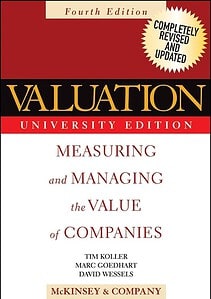Overview : The Little Book of Value Investing By Christopher H. Browne
-
Book Title: The Little Book of Value Investing
-
Author: Christopher H. Browne
-
Publication Date: October 2006
-
Rating: 4.5
-
price: $21.49
-
Pages: 208
About the Author
The Little Book of Value Investing is authored by Christopher H. Browne, a seasoned value investor and managing director of Tweedy, Browne Company. In this concise guide, Browne simplifies the principles of value investing, making it accessible to readers of all levels.
Introduction The Little Book of Value Investing Book
The Little Book of Value Investing offers a concise and practical guide to mastering value investing principles. Perfect for beginners and seasoned investors, it delivers actionable insights to help achieve long-term success in the stock market. Here is The Little Book of Value Investing book review highlights its timeless strategies for identifying undervalued stocks, managing risk, and building wealth through disciplined investment practices.
The Little Book of Value Investing Book Summary
The Little Book of Value Investing by Christopher H. Browne simplifies value investing principles, guiding readers on how to identify undervalued stocks and build wealth long-term. The author emphasizes patience, discipline, and thorough research in picking quality investments. Browne demystifies complex strategies, making timeless investing wisdom accessible for beginners and experienced investors alike, with practical, actionable insights.
"Be greedy when others are fearful and fearful when others are greedy." - Warren Buffett, as quoted by Browne
Key Themes of The Little Book of Value Investing
1. The Fundamentals of Value Investing
Browne expertly introduces the core concept of value investing: purchasing undervalued stocks and holding them until the market recognizes their true worth. This approach, rooted in patience and thorough analysis, stands in stark contrast to the fast-paced trading often seen in today's volatile markets.
2. Identifying Undervalued Stocks
The book provides a step-by-step guide to identifying undervalued stocks through rigorous research and analysis. Browne emphasizes the importance of understanding a company's:
- Financial health
- Management quality
- Competitive advantage
- Market position
3. The Margin of Safety
One of the most crucial concepts Browne discusses is the "margin of safety" - buying stocks at a significant discount to their intrinsic value. This principle, pioneered by Benjamin Graham, serves as a buffer against market fluctuations and potential errors in judgment.
4. Long-Term Perspective and Emotional Discipline
Browne stresses the importance of adopting a long-term perspective and maintaining emotional discipline. In an era of high-frequency trading and market volatility, these qualities are more valuable than ever for personal finance success.
Writing Style and Accessibility
Browne's writing style is clear, engaging, and refreshingly jargon-free. Complex financial concepts are explained through relatable analogies and real-world examples, making the book accessible to readers with varying levels of financial literacy.
The book's structure, with focused chapters and summary points, enhances its readability and makes it an excellent reference guide for ongoing consultation.
Strengths and Weaknesses of The Little Book of Value Investing
Strengths:
- Concise yet comprehensive coverage of value investing principles
- Practical advice backed by real-world examples
- Clear explanations of complex financial concepts
- Timeless wisdom applicable in various market conditions
Weaknesses:
- Limited discussion of modern market trends like cryptocurrencies
- Some readers might prefer more in-depth technical analysis
The Little Book of Value Investing Related Books
While "The Little Book of Value Investing" shares similarities with classics like Benjamin Graham's "The Intelligent Investor," it stands out for its concise format and modern context. Compared to more recent works like "The Warren Buffett Way" by Robert Hagstrom, Browne's book offers a more foundational approach, making it an ideal starting point for those new to value investing.
Relevance to Current Market Trends
Despite being published in 2007, the principles outlined in Browne's book remain highly relevant in today's dynamic financial landscape. As markets grapple with unprecedented events and new asset classes emerge, the fundamental approach to analyzing intrinsic value provides a stabilizing framework for investors.
While the book doesn't directly address recent phenomena like the rise of cryptocurrencies or the impact of global pandemics on markets, its teachings on risk management and long-term thinking are invaluable in navigating these new challenges.
Highlights from The Little Book of Value Investing by Christopher H. Browne
Value Over Growth: Focus on buying stocks that are undervalued, not those with high growth expectations.
Margin of Safety: Invest in companies trading significantly below their intrinsic value to minimize risk.
Patience Pays Off: Value investing requires a long-term perspective and the discipline to wait for market recognition.
Do Your Homework: Conduct thorough research on a company's financials, management, and competitive position.
Ignore Market Noise: Avoid reacting to short-term market fluctuations and media hype.
Focus on Dividends: Look for companies with strong cash flow and consistent dividend payouts.
Avoid Herd Mentality: Invest independently of popular trends and market sentiment.
Conclusion and Recommendation
"The Little Book of Value Investing" is an essential read for anyone looking to build a solid foundation in investment strategy. Its timeless wisdom, coupled with Browne's clear explanations, makes it a valuable resource for both personal finance enthusiasts and professional investors.
In a world where financial advice is often clouded by complexity and short-term thinking, Browne's book stands as a beacon of clarity and long-term wisdom. Whether you're just starting your investment journey or looking to refine your approach, this book offers invaluable insights that can help shape a successful and sustainable investment strategy.
For those ready to dive deeper into the world of value investing, consider purchasing "The Little Book of Value Investing" through our affiliate link below. It's an investment in knowledge that could pay dividends for years to come.
Purchase "The Little Book of Value Investing" on Amazon
Note: This review is based on the 2007 edition. While the core principles remain unchanged, readers should complement this book with current market analysis and up-to-date financial news for a comprehensive understanding of today's investment landscape. In conclusion, this article has provided an overview of the topic at hand.






